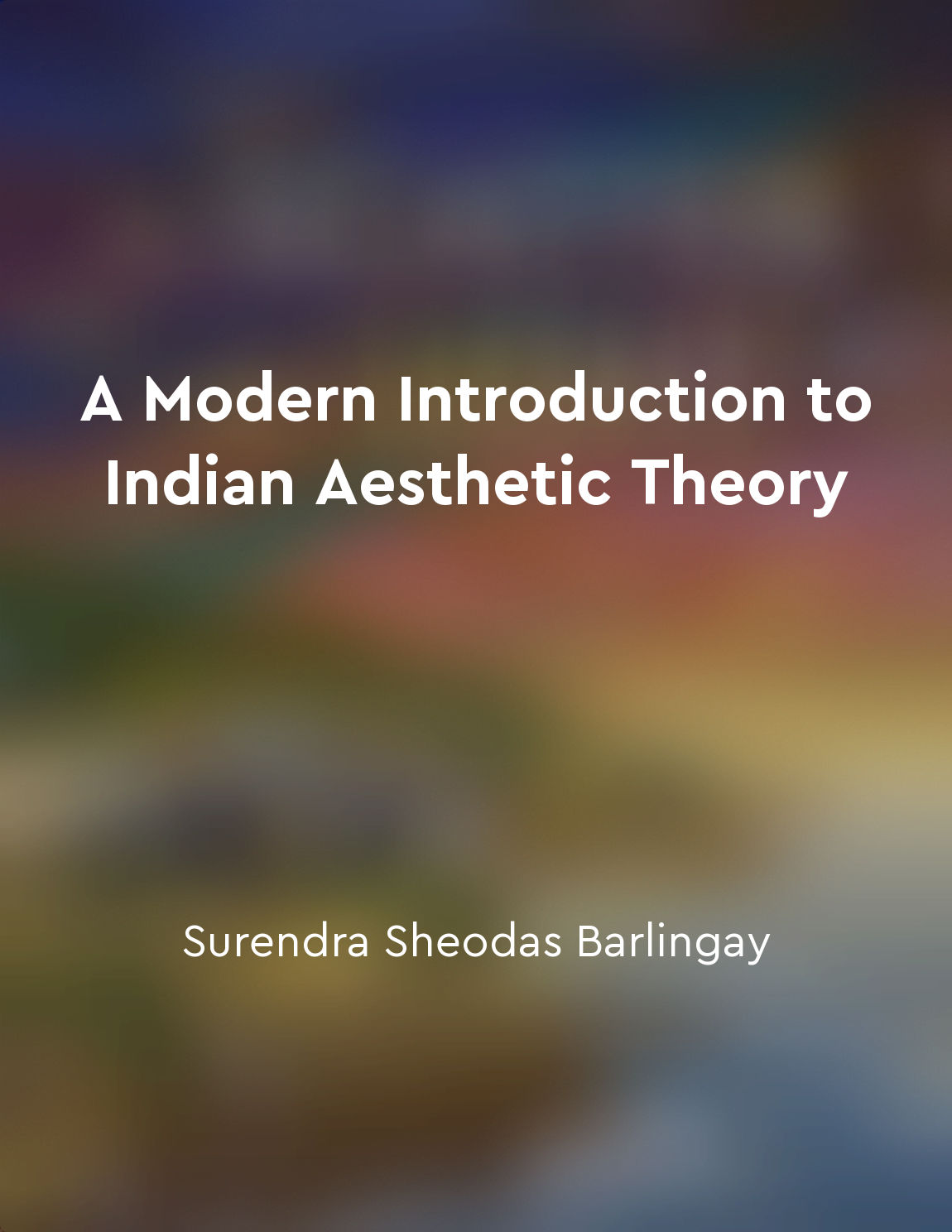Understanding the concept of Rasa from "summary" of A Modern Introduction to Indian Aesthetic Theory by Surendra Sheodas Barlingay
Rasa is a central concept in Indian aesthetic theory, representing an experience that is evoked by a work of art. It is not just a simple emotion, but a complex blend of emotions that are experienced by the audience when they engage with a piece of art. The concept of Rasa is unique to Indian aesthetics, as it focuses on the emotional response of the audience rather than the artist's intentions or the technical qualities of the artwork.
Rasa is often described as a universal human experience that transcends cultural and linguistic boundaries. It is believed to be a fundamental aspect of human nature, connecting individuals through shared emotions and experiences. The concept of Rasa is deeply rooted in Indian philosophy and spirituality, reflecting the belief that art has the power to evoke profound emotions and transform the consciousness of the audience.
Rasa is typically associated with different types of emotions, known as bhavas, which are the basic building blocks of aesthetic experience. These emotions include love, joy, anger, compassion, and many others, each of which can be combined and transformed to create a unique emotional experience. The artist's role is to evoke these emotions in the audience through the use of various aesthetic elements, such as language, music, dance, and visual imagery.
The concept of Rasa is closely linked to the idea of aesthetic pleasure, known as rasa-svada, which is the enjoyment that the audience derives from experiencing a work of art. This pleasure is not merely a superficial or fleeting emotion, but a profound sense of fulfillment and enrichment that comes from engaging with the aesthetic qualities of the artwork. Rasa-svada is believed to be a transformative experience that can elevate the consciousness of the audience and lead to spiritual enlightenment.
In order to fully appreciate the concept of Rasa, it is important to understand the role of the audience in the aesthetic experience. The audience is not a passive observer, but an active participant who plays a crucial role in co-creating the emotional experience of the artwork. By engaging with the aesthetic elements of the artwork, the audience is able to connect with their own emotions and experiences, allowing them to experience the full range of Rasa that the artist intends to evoke.The concept of Rasa is a rich and multifaceted idea that lies at the heart of Indian aesthetic theory. It represents a deep understanding of the power of art to evoke emotions, connect individuals, and elevate consciousness. By exploring the concept of Rasa, we can gain a deeper appreciation for the

Open in app
The road to your goals is in your pocket! Download the Oter App to continue reading your Microbooks from anywhere, anytime.


